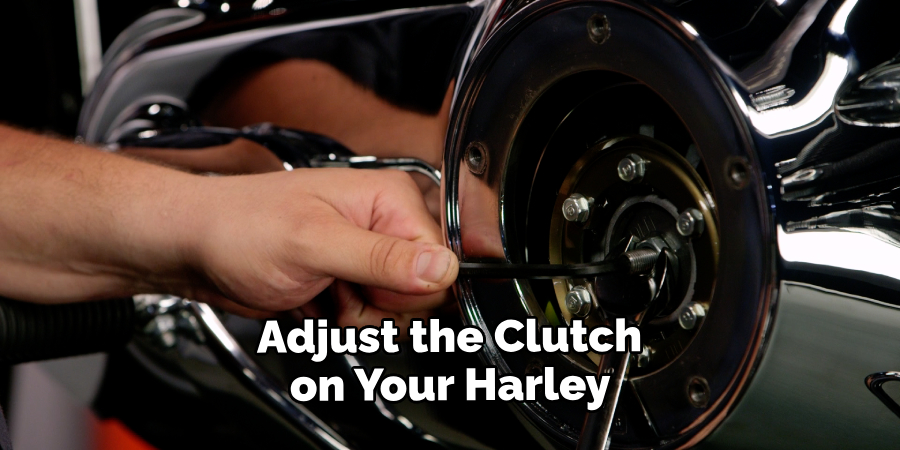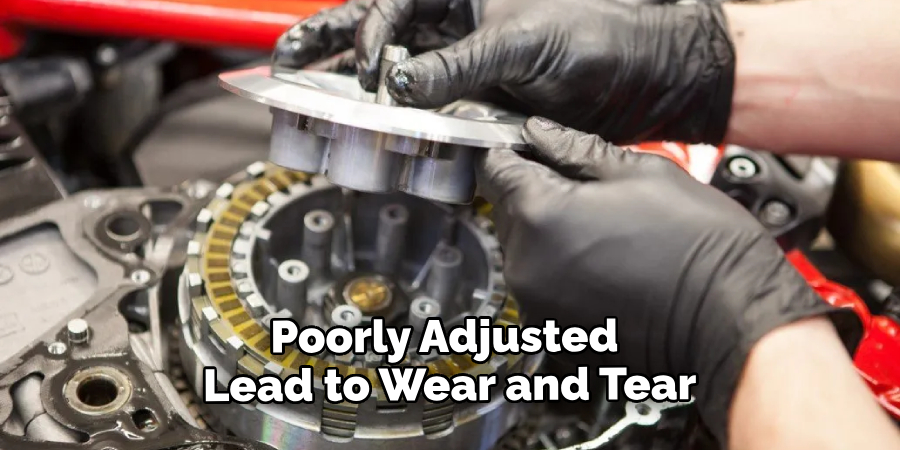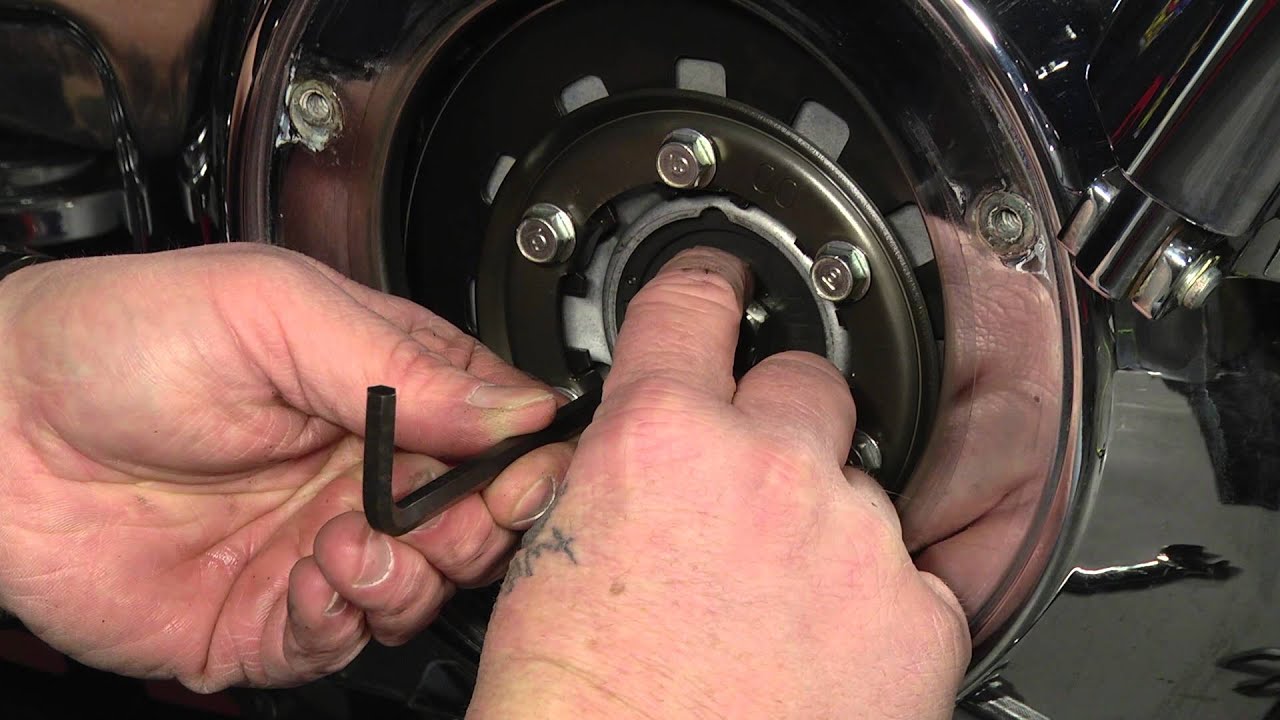To adjust the clutch on a Harley, follow these steps: (1) Loosen the locknut on the clutch cable adjuster; (2) Turn the adjuster screw counterclockwise to increase clutch freeplay or clockwise to decrease it until the specified amount of freeplay is achieved. Taking care of your Harley’s clutch is crucial for smooth gear shifting and optimal performance.
Incorrect clutch adjustment can lead to clutch slippage or poor acceleration. We will guide you through the process of adjusting your Harley’s clutch to ensure a seamless riding experience. By following these simple steps, you can easily tweak the clutch to your desired setting and maintain the longevity of your bike’s clutch system.
So, let’s dive in and master the art of Harley clutch adjustment.

Credit: www.fixmyhog.com
Importance Of Clutch Adjustment
Adjusting the clutch on your Harley is essential for ensuring smooth shifting and proper engagement of gears. It plays a crucial role in extending the lifespan of the clutch components and maintaining optimal performance of your motorcycle. Ignoring clutch adjustment can lead to issues like clutch slippage, difficulty in shifting gears, and excessive wear on clutch plates.
Regular clutch adjustment is necessary because as the clutch wears over time, it gradually starts to disengage less efficiently. This can result in a number of problems like clutch drag or clutch slip, where the clutch does not fully engage or disengage. By adjusting the clutch, you can improve the clutch’s performance and prevent potential damage to other transmission components.
It is important to note that the process of clutch adjustment may vary depending on the specific model and year of your Harley. It is recommended to refer to your motorcycle’s service manual or seek professional assistance to ensure proper adjustment that suits your bike. Regular maintenance and clutch adjustments are key to enjoying a smooth and trouble-free ride on your Harley.
Signs Of A Misadjusted Clutch
Adjusting the clutch on your Harley is essential to ensure smooth gear shifting and prevent issues such as clutch slipping or dragging. One of the signs that your clutch may be misadjusted is difficulty in shifting gears smoothly. If you find it hard to shift gears without grinding or jerking, it could indicate a misadjusted clutch. Another telltale sign is when you notice the clutch slipping or dragging, where the clutch fails to engage or disengage properly.
Unusual noise when engaging the clutch:
A misadjusted clutch can also manifest as unusual noises when engaging the clutch. You may hear grinding, rattling, or other abnormal sounds when you press the clutch pedal. These noises can indicate a misalignment of components or improper clutch adjustment. It is important to address these noises promptly to prevent further damage.
Clutch disengaging too early or too late:
An improperly adjusted clutch can lead to the clutch disengaging too early or too late. If the clutch disengages too early, you may experience difficulty in accelerating smoothly as power delivery is hindered. On the other hand, if the clutch disengages too late, you may notice the engine not revving properly or the bike lurching forward unexpectedly. Both scenarios can be attributed to a misadjusted clutch.
Tools Required For Clutch Adjustment
When adjusting the clutch on your Harley, you’ll need a few basic tools:
- Clutch adjustment wrench or Allen key
- Screwdriver
- Spanner
- Clean rag or towel
Using the right tools will ensure a smooth adjustment process. The clutch adjustment wrench or Allen key is essential for accessing the clutch adjustment mechanism. A screwdriver may be needed to loosen or tighten specific components during the adjustment. The spanner will come in handy for securing bolts and nuts into place. Lastly, having a clean rag or towel nearby will allow you to wipe away any grease or dirt that may accumulate during the adjustment.
Step-By-Step Guide To Adjust Harley Clutch
In order to adjust the Harley clutch, you need to follow a step-by-step guide to ensure optimal performance. First, check the motorcycle’s manual for the recommended specifications. This will give you an idea of the adjustments needed.
Next, loosen or tighten the adjuster to achieve the desired tension. This will depend on your specific clutch setup and personal preference.
Ensure that the clutch lever has a slight amount of free play. This means that when the lever is fully released, there should be a small gap before the clutch engages.
Start the motorcycle and engage the clutch lever. Shift through the gears to ensure smooth operation. If you experience any issues or difficulties shifting, it may indicate that further adjustments are needed.
Make any necessary adjustments to achieve optimal performance. This may involve fine-tuning the clutch lever position or adjusting the tension as needed.
By following these steps and making the appropriate adjustments, you can effectively adjust the Harley clutch for smooth operation and enhanced performance.
Tips For Proper Clutch Adjustment
To properly adjust the clutch on your Harley motorcycle, it is important to follow a few key tips. First and foremost, consult the motorcycle’s manual for specific instructions related to your model. This will ensure that you’re adjusting the clutch correctly and avoiding any potential damage. Additionally, avoid over-tightening the clutch cable, as this can lead to premature wear and affect the clutch’s performance.

Regularly inspecting and maintaining the clutch system is also crucial for optimal performance. This includes checking the clutch plates, springs, and cable for any signs of wear or damage. If you’re unsure about the clutch adjustment procedure or feel uncomfortable handling it yourself, it’s recommended to seek professional assistance. They can provide expert guidance and perform the necessary adjustments to ensure your Harley’s clutch is functioning properly.
Frequently Asked Questions Of How To Adjust Harley Clutch
How Do I Know If My Harley Clutch Needs Adjustment?
If you experience slipping or difficulty in shifting gears, it may indicate that your Harley clutch needs adjustment. Pay attention to unusual noises or vibrations while engaging the clutch, as these could also be signs of adjustment issues. Consulting a mechanic is recommended for a proper diagnosis.
Can I Adjust My Harley Clutch Myself?
Adjusting the Harley clutch requires technical knowledge and expertise. Unless you are an experienced mechanic, it is recommended to have a professional handle the adjustment process. Attempting to adjust the clutch without proper knowledge may lead to further damage or incorrect adjustments, affecting the performance of your Harley.
How Often Should I Adjust My Harley Clutch?
The frequency of Harley clutch adjustment depends on various factors, including riding conditions, maintenance, and clutch usage. As a general rule, it is advisable to have your Harley clutch inspected and adjusted during routine maintenance or when you notice any signs of clutch issues, such as slipping or difficulty in gear shifting.
Regular maintenance can help prevent further damage and ensure smooth riding experience.
Why Is It Important To Properly Adjust The Harley Clutch?
Properly adjusting the Harley clutch ensures smooth gear shifting, prevents clutch slipping, and enhances overall riding performance. A poorly adjusted clutch may lead to excessive wear and tear, increased fuel consumption, and even potential damage to other components of the motorcycle.

Therefore, it is crucial to maintain the clutch adjustment for optimal functionality and longevity of your Harley.
Conclusion
Properly adjusting your Harley clutch is essential for smooth and efficient gear shifting. By following the step-by-step guide laid out in this post, you can quickly and effectively adjust your clutch to optimize its performance. Remember to regularly check and maintain your clutch to ensure a long-lasting and enjoyable riding experience.
Happy riding!

